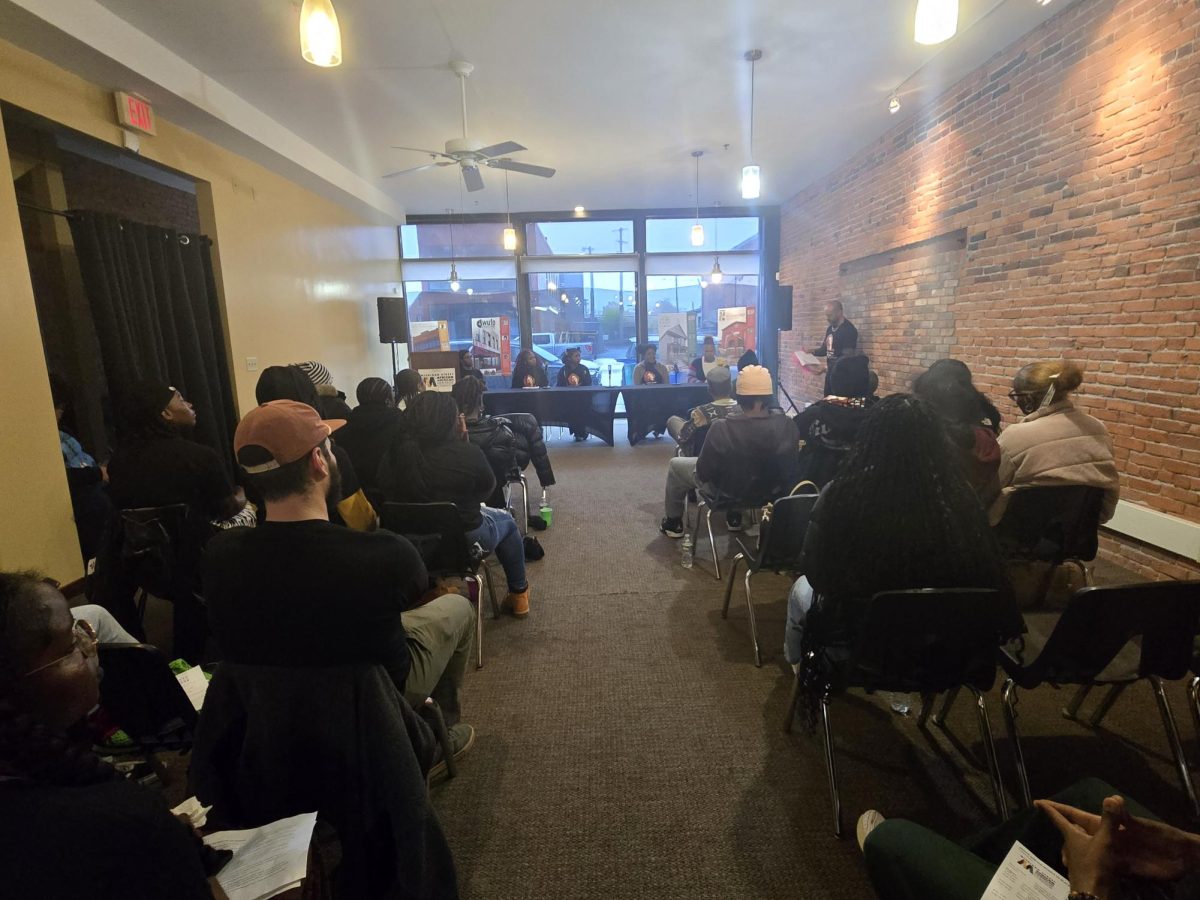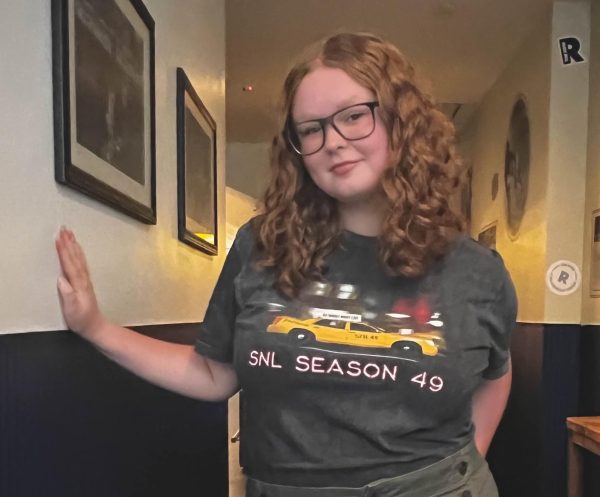Professor’s tips for merchandising and marketing
May 7, 2014
Teaching students about the textile industry is this professor’s trait. With 34 years of teaching experience, Liza Abraham, an assistant professor of fashion and textile technology, has seen the industry change across the globe.
“I was always intrigued by the beautiful and colorful textiles of India, also I used to sew a lot in my younger days,” Abraham said.
She went on to study textiles and clothing. Abraham earned her bachelor of science from the University of Bombay in 1978 and her master of science from the University of Bombay in 1980. After receiving her master’s, Abraham was motivated to continue, so she came to the United States and earned her Ph.D. from Iowa State University in 1992.
She’s been teaching since 1980, beginning with seven years in India at the University of Bombay, then three and a half years at Oklahoma State. She has been at Buffalo State since 1997.
“A desire to share what I had learned was what got me interested in teaching,” Abraham said.
She now teaches courses on issues in fashion merchandising, computer applications in buying merchandise and research methods in fashion merchandising.
Through the years, Abraham has seen education in the industry change. The industry is more focused on using technology and understanding the customer and what makes them buy certain brands.
She said she caters more to preparing students for the workplace, updating her curriculum so students are prepared for jobs in the industry. She teaches courses on creativity, exposing her students to innovative strategies and processes that retailers use today in the workplace.
In both countries that she’s lived in, she said India and the U.S. are looking for creativity in design and the conceptualizing of projects.
“Both are focusing on the needs and wants of the consumer group,” Abraham said.
However, she said India is now marketing toward its middle class.
“Today there are a lot more middle-class Indians who are spending a lot on luxury goods, and also the youngsters today are wearing more western clothing being influenced by Western media,” she said.
Fashion and textile technology is a tough business. Abraham tells her students that they need to have people skills, the ability to be quick on their feet, a passion for what they’re doing and creativity to succeed. She said her former students have gone into jobs in buying, merchandising, and the communication aspect of advertising and promotion. Some of her other students have become buyers in New York City and Buffalo, senior merchandisers and store managers.
To prepare her students for these positions, Abraham tries to use examples of different kinds of retailers and merchandisers, business models, case studies related to big department stores and the different strategies they use.
She said her students must be energetic, have the ability to creatively solve problems, have a liking for people, work long hours and adapt quickly to new ways of doing things.
One project that’s helping them hone these qualities is their collaboration with thrift shop Goodwill Industries.
Goodwill’s goal is to hire underprivileged people in the community. Its current goal is to increase the number of people they hire, so it is trying to improve sales by focusing on what it sells and the stores’ presentation.
The corporation approached the design department with the idea for students to help them.
“I teach research methods, so I was excited with the opportunity to do an applied research project,” Abraham said.
Buffalo State students have paired off to visit and take pictures of one of the nine Buffalo-area Goodwill stores assigned to them, in order to understand the difference between selling space versus non-selling space, and to create floor space plans.
The students were provided with a hand drawn floor space with dimensions. Now they’re using SmartDraw to create the floor plans in 2-D computer rendering to plan the layout of the merchandise in detailed arrangement on the selling space.
Abraham said the students are in the final stages of their projects, and next they’ll hope for client approval of their suggestions.
In the classroom and throughout projects like the partnership with Goodwill, Abraham said she enjoys getting to know the students.
She said, “I make sure they understand the subject matter and I make sure they succeed in the future career that they plan to have.”
Email: young.record@live.com
Twitter: @LivewithColly



